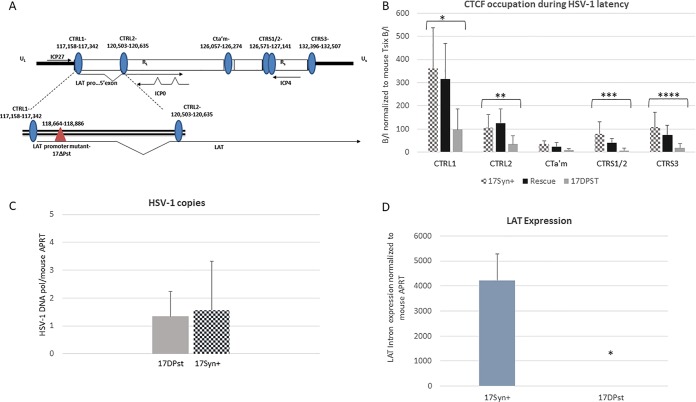FIG 4.
CTCF occupation is LAT dependent. The bar graphs represent ChIP assays using anti-CTCF as previously described. For each virus TG of three mice (6 TG) were pooled in one sample (n = 8). Relative enrichments for each gene region are shown for all three viruses. Statistical analyses were done for each site comparing the wt, mutant, and rescue samples. (A) Diagram of the deletion relative to the CTRL1 site in HSV-1. (B) In the LAT-null mutant virus 17ΔPst, CTCF occupation of each site is significantly lower at all sites, excluding CTa′m (for all comparisons, asterisks indicate a P value of <0.05), relative to the levels of wild-type and rescue viruses. (C) The number of HSV-1 genomes per sample was determined to show equivalent infections among the wt and mutant viruses. Relative copy numbers of HSV-1 DNA polymerase and mouse APRT were determined by PCR using 8 mice (16 TG) that were latently infected with 17Syn+ or 17ΔPst. TG were harvested at 28 days postinfection, and DNA was extracted. Data are presented as a ratio of HSV-1 DNA Pol/APRT. One-way ANOVA did not indicate a significant difference in HSV-1 copy numbers between the viruses. (D) Decreased LAT expression for the 17ΔPst virus was confirmed by qRT-PCR using primers/probe sequences specific for the LAT intron and normalized to mouse APRT (n = 8). Mice ganglia latent with either wt or 17ΔPst virus were harvested, and RNA was extracted as described in Materials and Methods.

